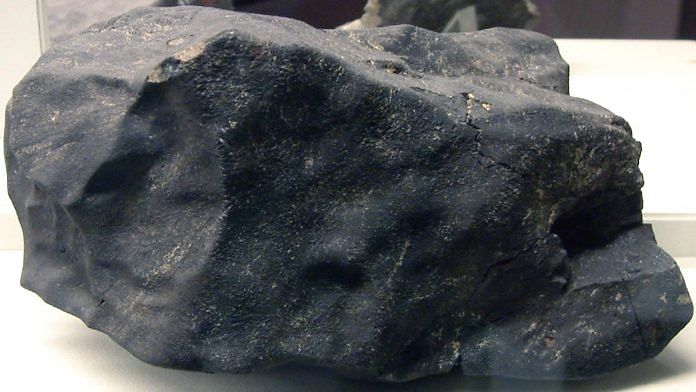Bengaluru: Japanese planetary scientists studying three carbon-rich meteorites suggest a crucial link between the building blocks of life on Earth and asteroids.
The researchers propose that materials required for the building blocks of life were likely deposited on earth by carbon-rich asteroids as meteorites. The findings were published in the journal Nature Communications Tuesday.
The scientists have confirmed the presence of all five primary nucleobases in the three meteorites. These nucleobases — indicated by the letters G, C, T, A, and U — make up all DNA and RNA.
The three meteorites studied were the Murchison meteorite (Australia, 1969), Tagish Lake meteorite (Canada, 2000), and Lake Murray meteorite (USA, 1933).
Also Read: ISRO-IISc team develops prototype of bacteria-infused bricks for Martian, lunar soil
Nucleobase structure and pairing
Nucleobases are biological compounds containing nitrogen that form the basis for nucleic acids — ribonucleic acid (RNA) and deoxyribonucleic acid (DNA). Nucleic acids are essential components for life as we understand it.
While there are numerous types of nucleobases, five are considered to be primary: adenine (A), guanine (G), cytosine (C), thymine (T), and uracil (U). DNA contains the A, G, C, and T bases, while RNA contains A, G, C, and U.
These nucleobases are classified into two types based on their structure, namely purine bases, where ring molecules are fused together in adenine and guanine; and pyrimidine bases with a simple ring molecular structures occurring in cytosine, thymine and uracil.
Nucleobases form pairs and support the helical structure of the DNA, with the base pairs making up the ‘rung’ of the ladder-like double helix. Each base pair consists of one purine base and one pyrimidine base.
Earlier, scientists had detected both purine bases, in addition to the pyrimidine uracil, in the Murchison meteorite from Australia, which was also a part of this study.
However, this is the first time that the other two pyrimidine bases have been identified in a space rock.
Wealth of pyrimidines
The team analysed the three carbon-rich meteorites using state-of-the-art techniques optimised for measuring nucleobases that occur in small scales.
They discovered an abundance of purine bases in the Murchison meteorite and found that purine concentrations varied in the two available samples of the meteorite, indicating that it was not homogeneous in composition and evolution.
Along with uracil, the team also discovered the two other pyrimidine bases in the meteorite thanks to newer, more sensitive technology.
To ensure there was no contamination from soil, concentrations of nucleobases in surrounding soil samples were also measured for comparison, and found to be much higher than in the rocks.
The process was repeated for the Tagish Lake and Lake Murray meteorites, with the team discovering that each rock was filled with a variety of nitrogen molecules and nucleobases. Some, like the compound imidazole, are a catalyst for molecular synthesis reactions, which in turn form these bases in the first place.
All three rocks had both purine and pyrimidine nucleobases.
Additionally, the team found that each meteorite had a different concentration of these bases, indicating that they all evolved in a separate manner.
The authors of the study propose that these nucleobases, which make up the fundamental blocks of life, could have been at least partly generated by photochemical reactions in outer space during the formation of the Sun. They then came to be incorporated and embedded into asteroids as the solar system formed.
Subsequently, these base-rich carbon-rich asteroids bombarded Earth in the form of meteorites, delivering these compounds to the planet, eventually leading to the formation of life, concludes the research team.
(Edited by Amrtansh Arora)
Also Read: All about micronova, newly discovered type of star explosion that may be common but hard to spot



